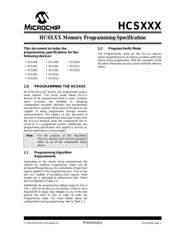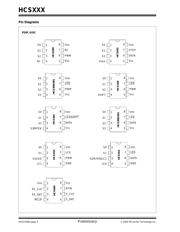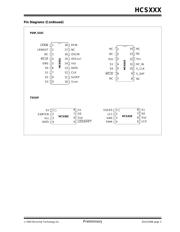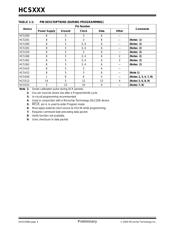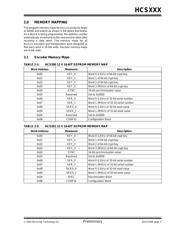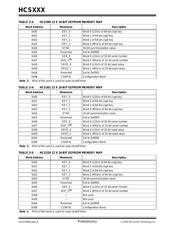herunterladen

2004 Microchip Technology Inc. Preliminary DS41256B-page 1
HCSXXX
This document includes the
programming specifications for the
following devices:
1.0 PROGRAMMING THE HCSXXX
All of the KEELOQ
®
devices are programmed using a
serial method. This Serial mode allows K
EELOQ
devices to be programmed while in users' systems,
which increases the flexibility of designing
cryptographic encoders, decoders and transponders
into electronic systems. While some of the devices are
capable of being programmed through wireless
communications, the subject of this document is
focused on wired programmers that make contact with
the K
EELOQ products while the components are in-
circuit or in a programmer socket. Additionally, this
programming specification only applies to all KEELOQ
devices listed above in all packages.
1.1 Programming Algorithm
Requirements
Depending on the device being programmed, the
method for entering Programming mode can be
achieved through the use of a combination of logic level
signals applied to the programming pins. One or two
pins are capable of accepting clock signals, while
another pin is dedicated to bidirectional data. These
pins are detailed in Table 1-1.
Additionally, the programming voltage range for V
DD is
+5V ± 10% for all the K
EELOQ devices. There is not a
requirement to apply high voltages to any of the pins
beyond the level of VDD in order to enter the
Programming mode. For more details about pin
configurations during programming, refer to Table 1-1.
1.2 Program/Verify Mode
The Program/Verify mode for the KEELOQ devices
allows programming for all memory locations within the
device being programmed. With the exception of the
decoders, these pins are also used to verify the memory
arrays.
• HCS200 • HCS360 • HCS500
• HCS201 • HCS361 • HCS512
• HCS300 • HCS362 • HCS515
• HCS301 • HCS410
• HCS320 • HCS412
Note: For the purpose of this document,
“K
EELOQ devices” and “KEELOQ products”
refers to all of the components listed
above.
HCSXXX Memory Programming Specification
Verzeichnis


